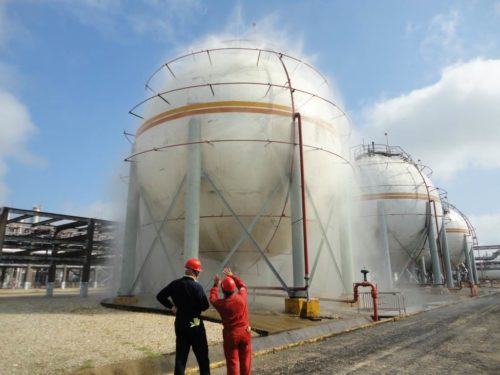Pressure vessel containers play an intricate role in manufacturing and processing. Without each type, industrial and manufacturing plants would be much less effective. There are three common types of pressure vessel containers: storage tanks, heat exchangers and pressure vessels. Each has a different purpose; however, each works together to help with production. We’ll detail the function and importance of all three types:
 Of the three types of pressure vessel containers, storage tanks hold the greatest purpose. These tanks store important and often times dangerous substances. Natural gas and liquified hydrogen are examples of substances stored in tanks. These tanks must be built strong and strategically to ensure no leaks occur, as leaks could cause harm to operators and to the environment. It is also essential to keep storage tanks clean. Any tampering could jeopardize the eventual processing of the internal substance.
Of the three types of pressure vessel containers, storage tanks hold the greatest purpose. These tanks store important and often times dangerous substances. Natural gas and liquified hydrogen are examples of substances stored in tanks. These tanks must be built strong and strategically to ensure no leaks occur, as leaks could cause harm to operators and to the environment. It is also essential to keep storage tanks clean. Any tampering could jeopardize the eventual processing of the internal substance.
Instances have occurred throughout the history of storage tanks in which animals have found their way inside a tank or human beings have tampered with the inside because the tank was not properly secured and locked. These occurrences while rare, can cause harm to a company and the overall manufacturing and industrial industries. Not to mention, it can risk the lives of people and the well-being of the surrounding environment.
Surely, you get the point.
Storage tanks must be kept up, secured and sealed to maintain the integrity of the inside substance. Even if that substance is just water, the same guidelines apply.
Heat transfer is also key to production. The ability to control heat is a must in most production practices. Some substances need heat and others will fail if exposed to heat. Therefore, heat must be controlled. The control of heat is executed through heat exchangers.
Heat exchangers transfer heat from one medium to another. They are most commonly constructed with carbon steel, but each exchanger may be designed and constructed differently depending on the container or substance it is transferring heat to. The idea is for each exchanger to perform optimally in order to protect and facilitate production.
Process vessels are the most versatile of the types of pressure vessel containers. They serve multiple purposes, including combining one product with another, removing part of a product, or breaking down a product. Pressure vessels are meant to refine or perfect a particular product. Heat exchangers control the flow of heat to the product, storage tanks store the product and pressure vessels perfect the product. It’s a team effort.
All three types of pressure vessel items work to ease manufacturing and processing. Ultimately, they come full circle. Again, it is imperative that each of these containers be regularly treated with care and attentiveness to guarantee they perform safely and optimally. They need to be inspected regularly to assure this.
To take advantage of innovative inspection equipment, contact Frazier Reliability Solutions. We pride ourselves in our innovative equipment and we aim to help companies produce while staying safe. Please visit our blog for additional input and information regarding industrial equipment and services.